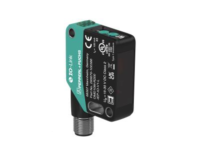
Predictive maintenance has been a concept engineers and industry workers alike have worked towards for quite some time. In the aviation industry, these improvements could make aircraft and their components, such as aircraft tires, safer and easier to monitor. One of the ways the industry is trying to achieve a state of predictive maintenance is by converging sensors with data processing, especially since sensor prices are dropping while becoming more intelligent and resourceful.
Manufacturers have been improving their monitoring and understanding of aircraft behavior through finding more intensive uses for sensors. These enhancements in software solutions and sensing for permanent assessment of systems will make aircraft “smarter,” and easier to maintain.
Unlike wireless, wired sensors were mainly used for control and fault monitoring, but are being adopted by other systems like integrated health management. Companies like Embraer, for example, are developing a structural health monitoring (S-SHM) solution, while ATR and Meggitt Sensing Systems are working on a propeller-balance trending system.
Operators can now receive more frequent automated reports instead of constantly keeping tabs on engine vibration, having to arrange regular ground testing, or putting maintenance personnel on revenue flights. Simply put, the impact on engine accessories has resulted in improved reliability- hence why maintenance costs are projected to decrease as well.
More compact data acquisition units are among the primary enabling factors behind the design of these systems and recent improvements. While it’s definitely a stretch from a technological standpoint, the next step for sensors is projected to be wireless communication, something that ATR has been using on their wireless sensors for flight-testing purposes over the past two years.
The central system received concentrated engine data at the nacelle level, whose experience gained through flight testing could be used to extend a certified aircraft’s overall capabilities. Currently certified for civil aviation, wireless sensors do offer higher memory capacity, improved wireless offload capability, and longer battery life.
The benefits for wireless sensors are plentiful, and one that stands out most is an aircraft’s weight reduction from lack of wiring. It’s estimated wireless sensors could reduce an airplane’s wiring weight of 11,000-13,000 pounds by as much as 3300-4000 pounds. Another benefit could be oil condition monitoring, which would trigger detection of precursors for problems like metal chips.
Wireless sensor technology can even access difficult to reach locations on an aircraft using rotating elements and temporary installation, allowing operators to connect and certify sensors from the engine-certification process entirely separately. This makes certifying wired sensors in new engine configurations a lot easier, since the traditional methods are normally very expensive.
Along with the ability to introduce sensors with greater ease, engineers can utilize wireless capabilities to optimize where, when, and how the data is recorded. Since the new sensor brands have their own storage capabilities that can be operated via smartphone or tablets, operators can download their accumulated data at any time. Since wireless sensors are used for maintenance purposes and aren’t part of the core engine bill of materials, sensor reliability won’t affect an engine’s dispatch availability or reliability.
By: Michael Luciano
Source: www.wirelessdesignmag.com


















